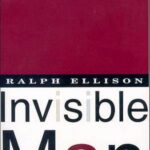Ralph Ellison’s first novel, Invisible Man, is one of the most impressive works of fiction by an American Negro. Readers will immediately discern in this novel features which have become Ellison trademarks. And amongst all the trademarks, the references that Ellison made between the invisible man (the narrator) and Louis Armstrong’s jazz music is innovative and fascinating. In Prologue of the book, the invisible man was listening to jazz music with his radio-phonograph. The reference between the invisible man and jazz music is first introduced in Prologue. Ellison is making reference to it several times in the novel. The purpose of the novel, the structure of the book, and the perception of the author could be seen in it.
For the invisible man, one phonograph was not enough for him to completely digest the song of Louis Armstrong; and for Ralph Ellison, one phonograph is not enough to emphasize how much the story of Invisible Man is related to Louis Armstrong and jazz music. What did I do to become so black and blue,” the voice of Louis Armstrong was coming out from a radio phonograph. This piece of jazz music is a commentary on the conflict faced by blacks in a racist white society. Thus, Ellison used Louis Armstrong’s jazz music to set the purpose of the novel – a commentary on the subject of conflict between the black and the white in America – which depicts the “blues” or sadness that the invisible man and blacks were facing in the Harlem community. The invisible man loved listening to the Louis Armstrong’s jazz music because “…he’s made poetry out of being invisible.” His invisibility came from the fact that others refused to see him as an individual man; instead, white people consider all blacks are exactly same “objects” living a subordinate life under the whites. On the other side, Ellison also indicated that the invisible man was taking the physical journey of jazz: Jazz began in the South and it was spread to the north as blacks migrated north. It, then, transformed into the jazz of the Harlem Renaissance. As a reference, the invisible man started his journey in the South and moved to the North. He, then, underwent a change when he settles in Harlem.
“Instead of the swift and imperceptible flowing of time, you are aware of its nodes, those points where time stands still or from which it leaps ahead…” Jazz changes in rhythm and beat constantly. Ellison provided a bridge between the progression of the story and the music structure of jazz. Ellison demonstrated these up-and-down rhythm and beat in his novel. When the invisible man was listening to jazz on the radio-phonograph, he unwittingly got himself into the scene in the black church and the story of the black woman killing for husband for the sake of her son. Ellison depicts this incident as the power of Armstrong’s music, the ability to change one’s sense of time. In fact, Ellison is describing a feeling of time displacement – displacement from reality and into his own world. Armstrong’s music can make one slips into the breaks and look around, often without a compass.
Throughout the novel, the invisible man’s quest was to find his own identity. Up to the very end of the story, the invisible man finally realized that one must have his individual uniqueness and remain true to his own identity without sacrificing his responsibility to the community. Also, he realized that his own identity should not be limited by people’s racism, being a black man, and other more general ideologies, the ideology of the Brotherhood. As the invisible man pointed out that “the end is in the beginning,” Ellison has depicted this perception in the Prologue with Armstrong and his jazz. Jazz depends on the improvisational talents of individual soloists and Louis Armstrong is a great example: He was said to be the one who almost created the role of the jazz soloist on his own with his individual expression on songs and tuning turning them into an art form with tremendous possibilities. Just as the invisible man, Armstrong was also struggling for individuality in American society. Armstrong is considered to be the most important soloist in the history of jazz; making Armstrong and his jazz as the first reference in Invisible Man, Ellison has summarized the whole novel in a sentence
In Invisible Man, Ralph Ellison has written a book about the emotional and intellectual hazards which beset the educated Negro in America. He has written it on two levels. The first is the level of story-telling, the second that of exaggeration, suggestion and symbolism. Ralph Ellison, making reference of his booking to Louis Armstrong and his jazz music, has deepened the novel since Jazz and Louis Armstrong are excellent symbols of the black community.



